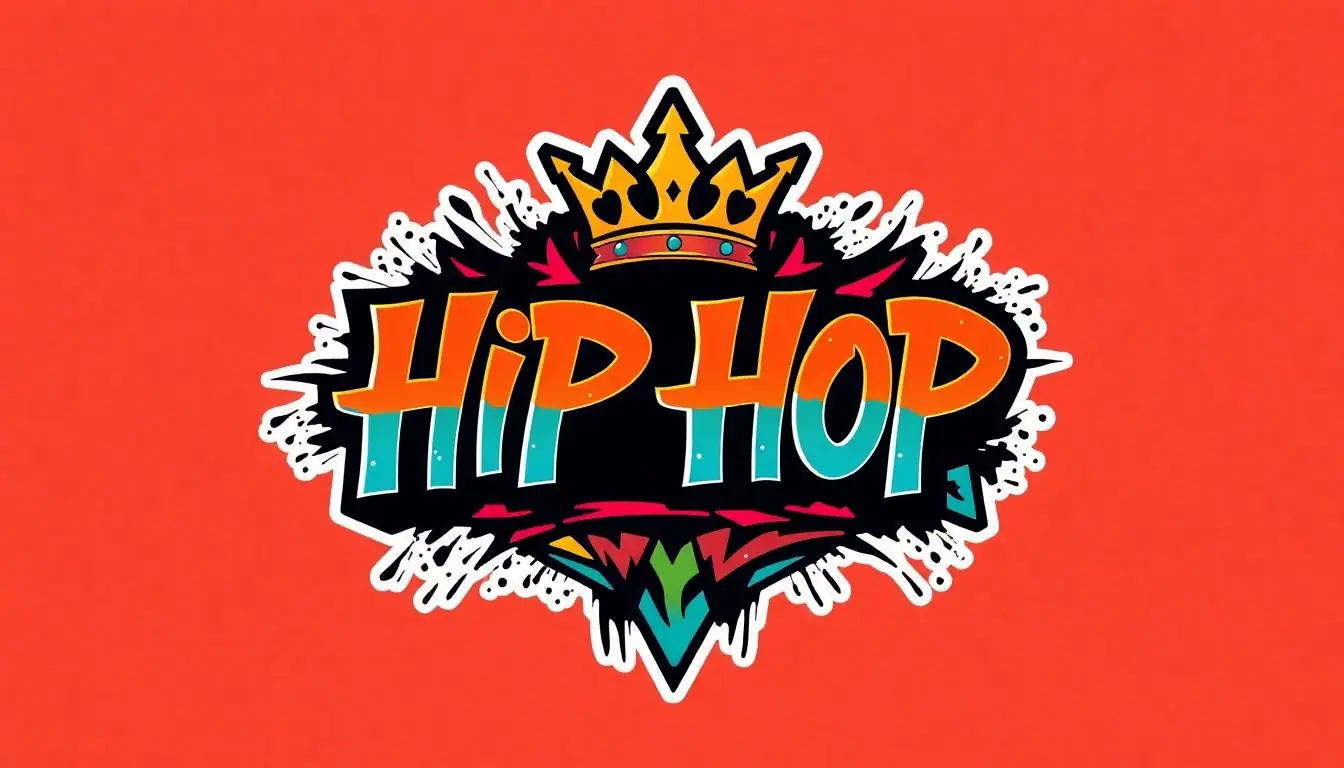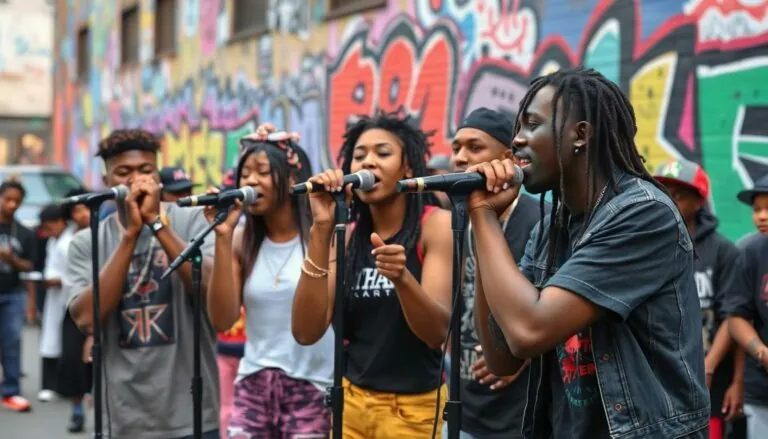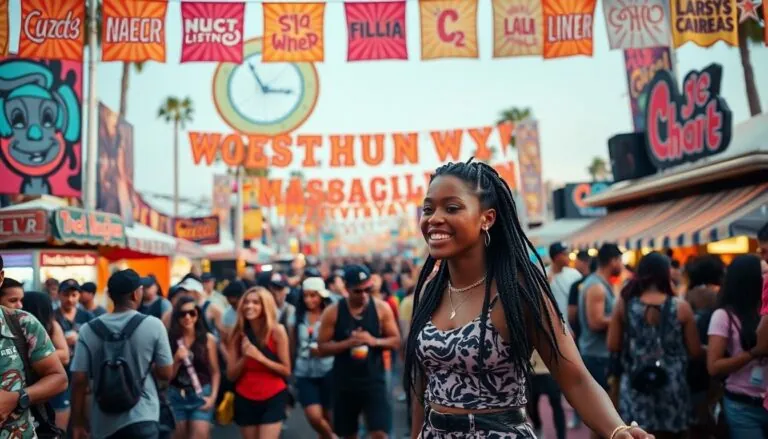Table of Contents
ToggleIn the vibrant world of hip hop, logos are more than just flashy designs; they’re cultural icons that tell stories. From the bold lettering of classic brands to the slick graphics of modern streetwear, these logos pack a punch and scream personality. They’re like the bling of the branding world—turning heads and sparking conversations.
Imagine walking down the street and spotting someone rockin’ a hoodie with a logo that instantly transports you back to your favorite rap battle. It’s not just fashion; it’s a statement. Hip hop logos capture the essence of the genre, embodying its rhythm, attitude, and flair. So, whether you’re a fan, a designer, or just someone who appreciates a good logo, dive into the world of hip hop branding and discover how these designs shape culture one beat at a time.
Overview Of Hip Hop Logos
Hip hop logos embody the genre’s spirit and creativity. Such logos reflect cultural heritage and the individual stories of artists and brands. Various elements, including typography, colors, and symbols, often characterize them. These design features convey messages that resonate with audiences.
Typography holds significant importance in logo design. Custom fonts or bold lettering create a unique identity for artists or brands, enhancing recognition. Colors play a vital role as well; vivid shades can evoke emotions and represent different vibes within hip hop culture. Iconic symbols like microphones or boomboxes frequently appear, representing the music’s roots and energy.
The evolution of hip hop logos illustrates changing aesthetics over time. Early designs often included graffiti-style lettering, rooted in urban art, while modern logos incorporate clean lines and minimalist styles. Such variations highlight the genre’s adaptability and influence.
Prominent logos from major brands exemplify successful hip hop branding strategies. For instance, Adidas and Nike logos are often associated with hip hop artists, creating a cultural fusion that strengthens brand loyalty. Collaborations between musicians and brands have led to memorable logo designs, enhancing visibility and market presence.
Brands and artists use these logos to connect with fans. By telling stories through design, they establish a sense of belonging within the community. The impact of these logos extends beyond fashion; they shape perceptions and identities in contemporary culture.
Understanding hip hop logos enhances appreciation for this vibrant art form. Recognizing the thought and culture encapsulated within these designs deepens the connection between fans and the genre. These logos stand as testaments to hip hop’s evolution and enduring legacy.
Importance Of Hip Hop Logos

Hip hop logos are essential components of the genre, playing a crucial role in its branding and cultural representation. These designs encapsulate the spirit of hip hop while fostering a unique identity for artists and their communities.
Brand Identity
Logos create a recognizable visual representation for hip hop brands and artists. Unique designs foster immediate recognition, allowing fans to connect with their favorite music and personalities. Custom colors and typography often reflect an artist’s style. Effective logos help differentiate one artist from another, establishing distinct brand identities within a crowded marketplace. For instance, the symbolic use of a crown in certain logos showcases status and dominance in the industry. This visual engagement builds loyalty among fans, enhancing their emotional connection to the music.
Cultural Significance
Hip hop logos hold immense cultural weight, acting as symbols of self-expression and creativity. These images often draw inspiration from urban art forms, with graffiti influences prominently featured. Logos communicate messages reflecting community struggles and triumphs. They resonate with audiences, promoting a shared sense of belonging and pride. Well-known logos have emerged as icons, influencing fashion trends and lifestyle choices. This cultural infusion enriches the relationship between hip hop and its audience, solidifying the genre’s presence in art and society.
Iconic Hip Hop Logos
Hip hop logos embody the spirit of the genre, acting as cultural statements and visual representations. Two standout examples represent the essence and influence of hip hop branding.
The Nike Swoosh
The Nike Swoosh remains a powerful symbol in hip hop culture. This logo represents athleticism and status, reflecting the genre’s connection to sports and streetwear. Artists frequently wear Nike products, solidifying brand loyalty among fans. The Swoosh not only signifies performance but also speaks to a lifestyle that resonates with many hip hop enthusiasts. Collaborations with prominent artists further enhance the logo’s appeal, merging music and fashion into a cohesive identity.
The Def Jam Recordings Logo
The Def Jam Recordings logo holds a significant place in hip hop history. Known for its bold typography and simplistic design, it symbolizes the label’s influential artists and pioneering sound. This logo reflects the evolution of hip hop and the role Def Jam has played in shaping the genre. The stark contrast of black and white reinforces its iconic status, making it instantly recognizable. Artists associated with Def Jam have propelled the label’s identity, creating a legacy that continues to inspire new generations.
Design Elements Of Hip Hop Logos
Design elements in hip hop logos blend creativity and cultural significance. These elements play a crucial role in conveying the genre’s identity and message effectively.
Typography
Typography stands as a vital component in hip hop logo design. Bold and stylized fonts often reflect the energy and rhythm of the genre. Graffiti-inspired lettering captures urban aesthetics, while modern fonts exhibit a minimalist approach. Custom typography enhances uniqueness, making logos instantly recognizable. Artists like Jay-Z embrace distinctive lettering styles that symbolize personal brands. Additionally, legibility is important; effective logos balance creativity with clarity. Ultimately, typography serves as a visual language connecting artists with their audience.
Color Schemes
Color schemes influence emotional responses in hip hop logos. Vibrant colors often evoke energy and excitement, aligning with the lively essence of hip hop culture. Contrasting palettes, like black and gold, convey luxury and status, appealing to a sense of aspiration. Designers commonly use colors associated with streetwear, such as reds and greens, to highlight cultural roots. Additionally, color choices can reflect the artist’s brand or message, infusing personal touch into designs. Subtle tones may communicate sophistication, while bold choices emphasize youthful creativity. Color, therefore, is essential in establishing brand identity within the hip hop community.
Contemporary Trends In Hip Hop Logos
Contemporary hip hop logos exhibit dynamic trends that reflect the genre’s evolution. Minimalism has emerged as a prominent design choice, with many artists favoring sleek and straightforward aesthetics. This approach prioritizes clarity and instant recognition, catering to an audience that values immediacy and impact.
Bold typography stands out in many recent designs. Artists frequently utilize custom fonts that echo the unique rhythms of their music, further reinforcing brand identity. Graffiti-style lettering still resonates strongly, paying homage to hip hop’s roots while appealing to urban culture enthusiasts.
Color schemes in current logo designs vary widely, often blending vibrant hues with muted tones. Such combinations evoke energy and luxury, communicating different facets of an artist’s persona. Designers frequently experiment with effects, like gradients or shadows, to create depth and visual intrigue.
Social media also plays a crucial role in shaping logo trends. Platforms like Instagram and TikTok pressure artists to maintain vivid and eye-catching logos to capture audience attention rapidly. This trend leads to designs that are optimized for digital viewing yet impactfully translate to merchandise and album covers.
Brand collaborations reflect a significant trend in the hip hop logo landscape. Partnerships between artists and fashion labels or corporations yield logo designs that merge artistic expression with commercial strategy. For instance, collaborative logos often incorporate shared branding elements, maximizing visibility and cultural relevance.
Cultural representation in logo design remains key. Many logos today express themes of empowerment, resilience, and community, mirroring the diverse stories within hip hop. Artists seek designs that resonate emotionally, creating visual connections that deepen fans’ engagement with the brand.
Overall, contemporary trends in hip hop logos demonstrate a fusion of creativity, influence, and technology that continues to shape the genre’s visual identity.
Hip hop logos embody the vibrant spirit of the genre while serving as powerful cultural symbols. They reflect the evolution of hip hop and its capacity for innovation and adaptation. As trends shift towards minimalism and bold typography, these logos continue to resonate with fans and creators alike.
The significance of these designs extends beyond aesthetics; they foster connections and promote a sense of community. Through their unique visual language, hip hop logos tell stories of empowerment and resilience, making them integral to the culture. As the genre evolves, so too will the logos that represent it, ensuring they remain relevant in a rapidly changing landscape.






